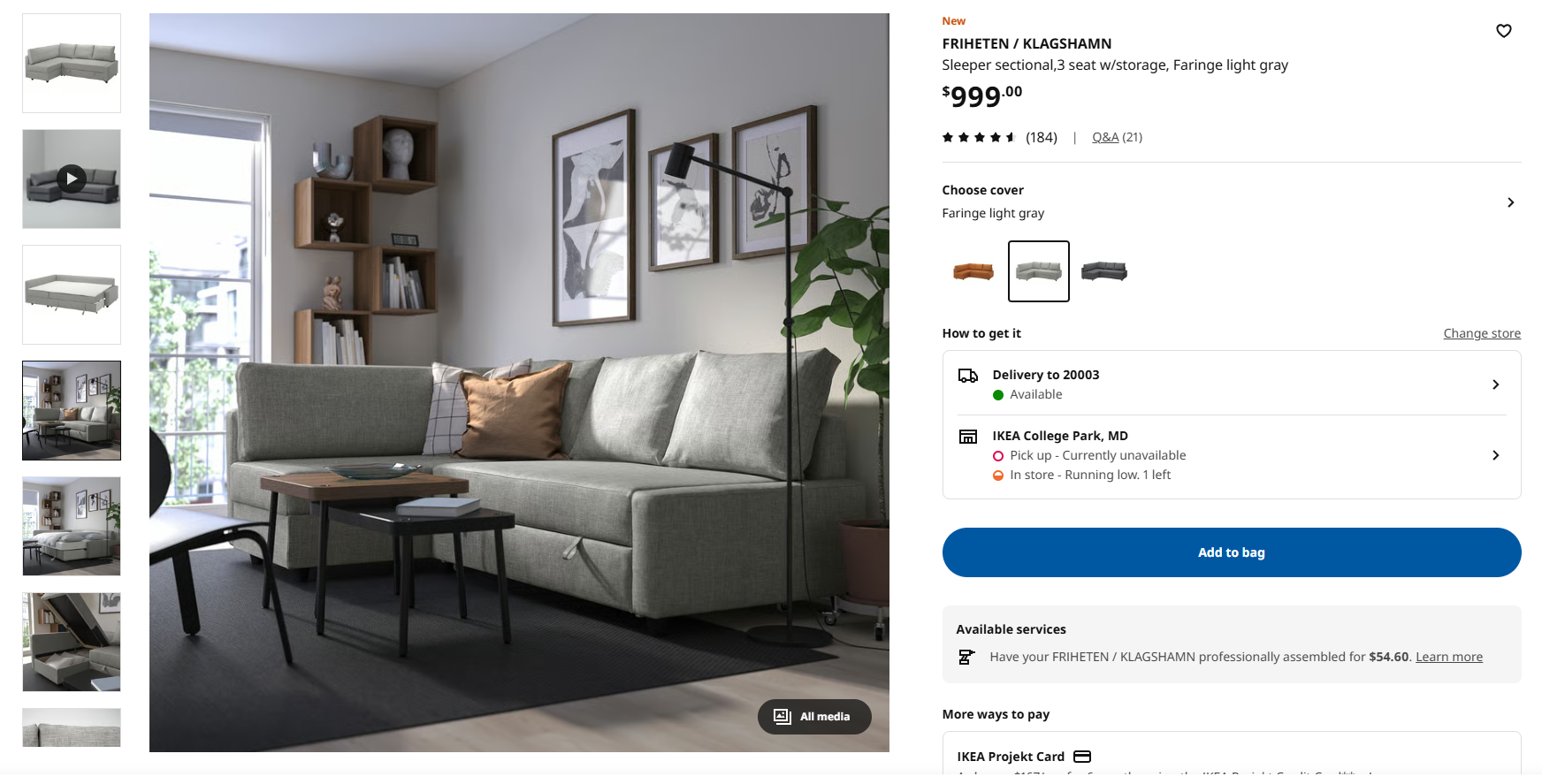In the world of disposable convenience, few objects illustrate our shifting values like the humble IKEA couch. Affordable, stylish, and accessible, it’s a staple of first apartments, student lounges, and starter homes. But what happens before and after it enters your living room? This is the story of its lifecycle—from origin to afterlife.
1. Birth: Raw Materials and Manufacturing
Every IKEA couch begins as a collection of raw materials—mostly harvested, mined, or synthesized in different parts of the globe.
- Wood: Often FSC-certified, the couch’s frame is typically made from fast-growing pine or particleboard—engineered wood bonded with adhesives and veneers.
- Foam: The cushions are filled with polyurethane foam, derived from petroleum—a non-renewable resource with a significant environmental footprint.
- Fabric: Upholstery may be polyester (plastic), cotton (water- and pesticide-intensive), or a blend. IKEA is pushing toward recycled polyester, but virgin materials still dominate.
Once sourced, these components are shipped to factories (often in Eastern Europe or Asia), where the couch is assembled in parts, flattened, and boxed for efficient transport. This flat-pack innovation—central to IKEA’s global dominance—reduces shipping costs but doesn’t offset the environmental cost of mass production.
2. Adoption: The Honeymoon Phase
Your IKEA couch arrives via delivery truck or a weekend trip to the warehouse. You assemble it with an Allen wrench, maybe cursing through the instructions, but eventually it sits proudly in your living room.
During this stage, it serves its purpose—hosting movie nights, naps, or your cat’s eternal shedding. It’s comfortable, looks decent, and was cheap enough to feel like a good deal.
For many people, this is a short-lived phase. The average lifespan of a budget couch—especially in households with kids, pets, or frequent moves—is 5–7 years, often less.
3. Decline: Sagging Cushions and Buyer’s Remorse
Soon, the wear begins:
- The cushions flatten.
- The frame may creak or warp.
- The fabric pills, tears, or stains permanently.
Since repairability is not baked into the design—frames aren’t made for reupholstering, cushion cores can’t be replaced, and replacement parts are rarely stocked—most users opt for replacement over repair.
This is not an accident. It’s part of the planned obsolescence built into much of the affordable furniture market. The couch isn’t made to last a lifetime. It’s made to be good enough for now.
4. Disposal or Rebirth: What Happens When You’re Done
When a couch’s time is up, its path forks.
Option A: The Landfill
The most common ending. Disassembling the couch is hard, recycling it is harder. Many donation centers won’t take used upholstered furniture due to fire codes, bedbug risk, or wear.
So it ends up on the curb. A municipal truck hauls it off to a landfill, where its synthetic foam takes centuries to break down. Its frame may rot (eventually), but the screws, glues, and synthetics leach into the soil and water. The environmental cost lingers long after the couch is forgotten.
Option B: The Aftermarket
If you’re lucky—or intentional—the couch might get a second life:
- Sold on Craigslist or Facebook Marketplace.
- Donated to a shelter or thrift store.
- Given to a friend or college student.
But even then, this is usually a delay, not a rescue. Most IKEA couches are on borrowed time.
Option C: Upcycled
A rarer but growing path. Some individuals or small businesses deconstruct old couches for parts—wood frames, hardware, or upholstery foam. Others retrofit them with new covers, legs, or structural reinforcements.
This is labor-intensive, but it’s one of the only ways to interrupt the linear path of extraction → use → waste.
5. The Bigger Picture: A Reflection on Value
IKEA’s couches are not inherently evil. They provide affordable seating to millions. But their lifecycle reflects the deeper problem of modern consumerism: we trade durability for immediacy. We build objects not to last, but to sell fast, look good in photos, and keep prices low.
But that cheapness comes at a cost—not just to the planet, but to our relationship with our belongings. When nothing is built to last, nothing is truly loved.
What Can You Do?
If you already own an IKEA couch:
- Extend its life: Add a slipcover, reinforce the frame, rotate the cushions.
- Avoid early retirement: Don’t throw it out at the first sign of wear.
- Pass it on responsibly: Use local buy-nothing groups or furniture banks.
If you’re in the market for a couch:
- Consider secondhand first.
- Invest in quality where you can afford it.
- Support makers who build for longevity, not landfill.

Leave a Reply